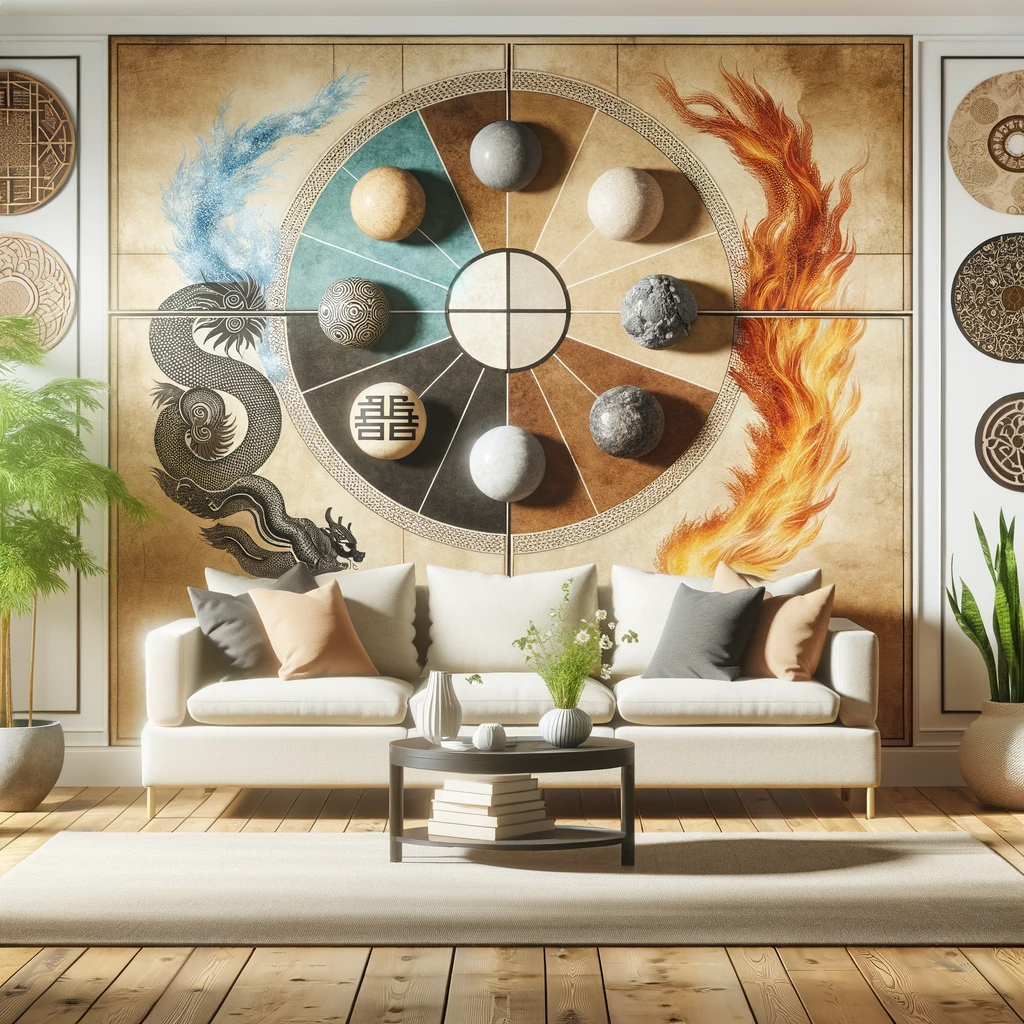Feng Shui, the ancient Chinese art of arranging living spaces, is based on the flow of chi, or energy, and its influence on our well-being and happiness. In the living room, where we gather, relax, and socialize, applying Feng Shui principles can create a space that is not only aesthetically pleasing but also promotes harmony and positive energy. Let’s explore how to bring the art of Feng Shui into your living room.
Contents
- 1 1. Understanding Feng Shui Basics
- 2 2. The Commanding Position
- 3 3. Balance the Five Elements
- 4 4. Opt for a Calming Color Palette
- 5 5. Prioritize Natural Light and Air Quality
- 6 6. Create a Clutter-Free Space
- 7 7. Incorporate Living Elements
- 8 8. Use Mirrors Wisely
- 9 9. Soften the Angles
- 10 10. Personalize Your Space
1. Understanding Feng Shui Basics
Feng Shui is rooted in the principle that our surroundings affect our energy. The goal is to balance the five elements (wood, fire, earth, metal, and water) and yin and yang (the dual principles of nature) to promote a flow of positive chi. Each element can be represented in various forms, such as colors, shapes, and materials.
2. The Commanding Position
In Feng Shui, the position of key furniture pieces is crucial. The sofa, being the most significant piece of furniture in the living room, should be placed in a commanding position. This means facing the main door but not directly in line with it. This placement offers a sense of security and control.
3. Balance the Five Elements
To create harmony, include all five elements in your living room. For example, wood can be represented by wooden furniture or green plants; fire by red accents or a fireplace; earth by earth-toned colors or ceramics; metal by metallic frames or sculptures; and water by mirrors or water features.
4. Opt for a Calming Color Palette
Colors greatly influence the energy of a space. Soft, neutral colors like beige, cream, or light yellow promote a calming atmosphere. You can introduce vibrant colors through accessories, but avoid overwhelming the space with too much brightness or contrast.
5. Prioritize Natural Light and Air Quality
Feng Shui places great importance on natural light and fresh air to enhance chi. Keep windows unobstructed to allow sunlight to flow in. Indoor plants can also improve air quality while adding a natural element.
6. Create a Clutter-Free Space
Clutter is the enemy of chi. A cluttered room can lead to stagnant energy and a cluttered mind. Keep your living room tidy and organized, ensuring a free flow of energy. Use storage solutions to keep items out of sight.
7. Incorporate Living Elements
Plants are a powerful tool in Feng Shui. They bring life, vitality, and a sense of growth. Choose healthy, vibrant plants and place them in areas where you want to encourage positive energy.
8. Use Mirrors Wisely
Mirrors can expand a space and reflect energy. However, their placement is key. Do not place mirrors directly facing the main door, as they can repel incoming energy. Instead, position them to reflect a beautiful view or to visually double the space.
9. Soften the Angles
Sharp corners, known as “poison arrows” in Feng Shui, can create a harsh energy. Soften these corners with plants, decorative screens, or by repositioning furniture.
10. Personalize Your Space
Finally, personalize your living room with items that bring you joy and reflect your personality. Family photos, artworks, or travel souvenirs can add a personal touch and create a space that feels uniquely yours.
Feng Shui in your living room is about creating a balanced, peaceful, and harmonious space. It’s not just about following rules; it’s about creating an environment where you and your loved ones can thrive. Experiment with these principles, adjust them to your space and needs, and observe how they influence your mood and well-being.

